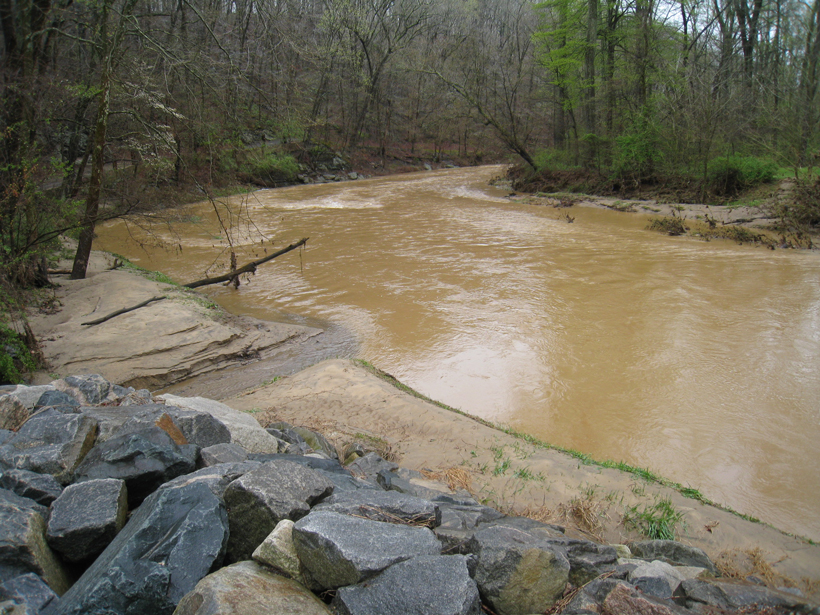Source: Journal of Geophysical Research: Biogeosciences
Nitrogen is an essential nutrient for aquatic life. However, too much nitrogen—often from human activities like fertilizer use—can lead to excessive growth of plants and algae, severely disrupting sensitive marine ecosystems.
Many studies have explored how streams collect and transport dissolved nitrogen through watersheds. However, big storms that erode soil can also mobilize nitrogen in particulate form—think tiny fragments of organic matter, like decomposed leaves. Now Inamdar et al. have shown how large storms affect the transport of particulate nitrogen in streams.
The authors focused on a 30-acre (12-hectare) forested watershed in Maryland near Chesapeake Bay, a threatened aquatic ecosystem. They already knew the area well; they had previously analyzed carbon transport there and charted water flow paths during storms.
The scientists monitored stream flow and chemistry in a temperate forest during 15 storms that occurred from autumn of 2010 through 2012, including four large tropical storms: Nicole, Irene, Lee, and Sandy. For each storm, the researchers measured the amounts of both dissolved and particulate nitrogen in stream water samples.
The observations revealed a detailed picture of nitrogen transport. Particulate nitrogen accounted for much of the total annual nitrogen carried by streams, and the four large tropical storms triggered the majority of the annual particulate nitrogen flow. In the summer, intense storms released more particulate nitrogen than the less intense storms of the autumn and spring.
Intense storms may release more particulate nitrogen because runoff picks up more nitrogen-rich material from the forest floor and erodes nitrogen-rich soil. In fact, when storms arrived quickly one after the other, later storms released less particulate nitrogen, perhaps because the earlier storms had already done the job.
These results may also extend to agricultural and urban landscapes, which are susceptible to erosion, and to other nutrients such as phosphorus, which may travel preferentially with particulate material.
As climate change increases the intensity of tropical storms in the northeast United States, more particulate nitrogen could be released from watersheds into sensitive aquatic ecosystems. To better predict the downstream effects of future storms, the scientists call for more research into tropical storm–generated particulate nitrogen transport. (Journal of Geophysical Research: Biogeosciences, doi:10.1002/2015JG002909, 2015)
—Sarah Stanley, Freelance Writer
Citation: Stanley, S. (2015), Strong storms flush out particulate nitrogen, Eos, 96, doi:10.1029/2015EO038161. Published on 29 October 2015.
Text © 2015. The authors. CC BY-NC 3.0
Except where otherwise noted, images are subject to copyright. Any reuse without express permission from the copyright owner is prohibited.

